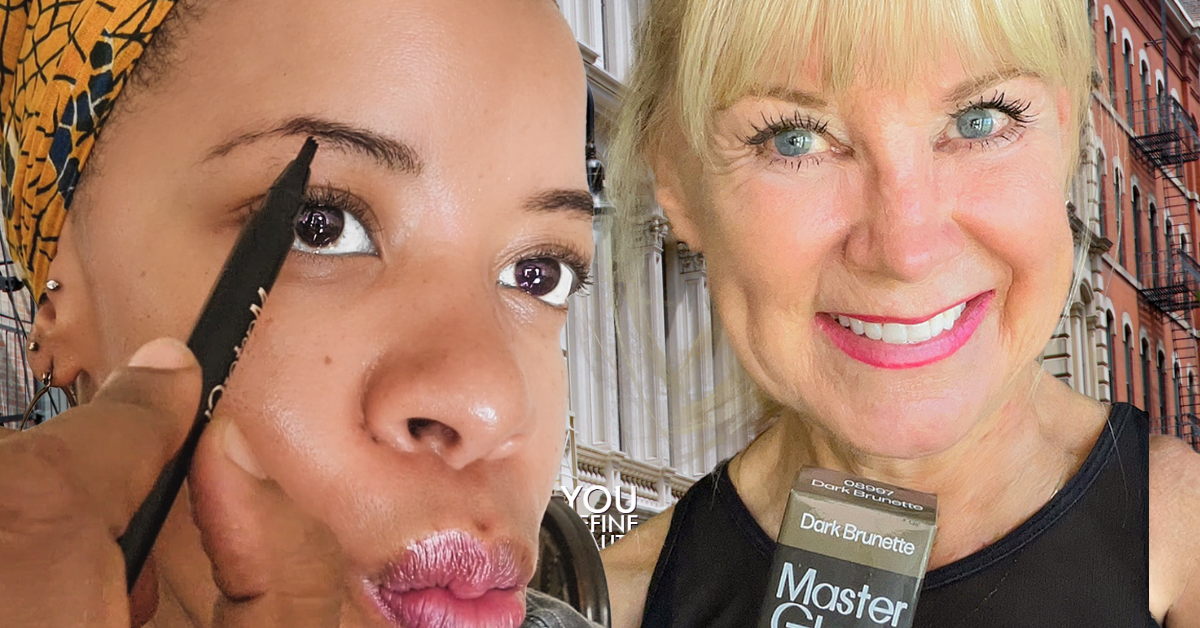What are prostaglandin analogs?
Prostaglandin analogs are synthetic hormone-like compounds that are structurally and functionally similar to compounds called prostaglandins. Prostaglandins help regulate various processes in the body, including inflammation and fluid production. They can also be found in virtually all connective tissue in the human body.
Prostaglandin analogs work by mimicking the primary mode of action of natural prostaglandins in the eye. This prevents fluids from building up and helps to lower intraocular pressure (IOP). Common brand names for prostaglandin analogs include Xalatan, Lumigan, and Travatan Z. Because of their effective primary mode of action, Lumigan skyrocketed in popularity in 2001 as prostaglandins became the go-to medication for glaucoma.
Over time, the cosmetics industry took note of the cosmetic side effects of the drug. After just a few months of use, patients noticed a difference in their eyebrows: they appeared darker and longer. An increase in blood flow to the site of application was thought to be the primary mechanism of action for prostaglandins and their analogs. For patients who wore eyeglasses, this increase in lash length and thickness would sometimes interfere with their field of vision, even preventing ophthamologists from being able to make an accurate prognosis on the progression of their disease.
In 2007, synthetic prostaglandin analogs began popping up in the offices of dermatologists, where anyone wanting longer eyelashes could easily sign up for an annual subscription. Many lash enhancement brands to this day use prostaglandin analogs in their serums without warning users of the side effects that they may experience when taking prostaglandin-based products.
What do Prostaglandin Analogs look like on an ingredient list?
These are some of the more popular prostaglandin analogs used in lash and brow serums today:
Isopropyl cloprostenate
Isopropyl phenyl hydroxypentane
Dihydroxy cyclopentyl heptane
Dechloro dihydroxy difluoro ethylcloprostenolamide
The potential side effects of using prostaglandin analogs
In 12-month clinical trials of bimatoprost ophthalmic solution 0.03% and 0.01%, the most commonly reported side effects were redness, eyelash growth, and excessive itchiness. These side effects were reported in up to 45% of test subjects. Adverse side effects reported from the use of prostaglandin analogs include redness, punctate keratitis and skin hyperpigmentation (from the overproduction of keratin and melanin at the site), blurred vision, and reduced visual acuity.
One thing to note about hyperpigmentation of the lid and iris (the colored part of the eye) is that this side effect is more pronounced in individuals with blue or green eyes. For these patients, this may manifest as dark brown flecks with long-term use.
It is also worth noting that while these side effects were officially documented after the official release of bimatoprost onto the market, researchers documented a similar effect of hyperpigmentation on a group of rabbits that were given trial doses of a prostaglandin back in 1998. (3)
How to find the best lash serum without prostaglandins
An alternative to prostaglandins is small peptides that help to regulate the production of structural proteins like collagen and keratin. Small peptides like Myristoyl pentapeptide-17 have been clinically shown to increase the number of anagen (growth phase) follicles by stimulating keratin gene expression at the follicle level. Topical use of peptides has not been linked to adverse events when used as recommended by the product manufacturer.
If you're looking for an eyebrow serum that can actually help you achieve thicker, fuller-looking brows without the added risk of irritation and hyperpigmentation, consider using a serum that contains peptides. Age and even race appear to be determining factors in whether one experiences hyperpigmentation when using prostaglandins.
Cosmetic chemists have found a way to improve the bioavailability of peptide-based formulations through the inclusion of primary and secondary emollients. This emollient base may also consist of multi-tasking ingredients like Panthenol, which helps to not only keep hair follicles hydrated and nourished but also create an optimal environment for skin delivery.
Sources:
(1) Woodward DF, Krauss AH, Chen J, Lai RK, Spada CS, Burk RM, Andrews SW, Shi L, Liang Y, Kedzie KM, Chen R, Gil DW, Kharlamb A, Archeampong A, Ling J, Madhu C, Ni J, Rix P, Usansky J, Usansky H, Weber A, Welty D, Yang W, Tang-Liu DD, Garst ME, Brar B, Wheeler LA, Kaplan LJ. The pharmacology of bimatoprost (Lumigan). Surv Ophthalmol. 2001 May;45 Suppl 4:S337-45. doi: 10.1016/s0039-6257(01)00224-7. Erratum in: Surv Ophthalmol 2002 May-Jun;47(3):295. PMID: 11434936.
(2) Figus M, Nardi M, Piaggi P, Sartini M, Guidi G, Martini L, Lazzeri S. Bimatoprost 0.01% vs bimatoprost 0.03%: a 12-month prospective trial of clinical and in vivo confocal microscopy in glaucoma patients. Eye (Lond). 2014 Apr;28(4):422-9. doi: 10.1038/eye.2013.304. Epub 2014 Jan 17. Erratum in: Eye (Lond). 2014 Apr;28(4):506. PMID: 24434659; PMCID: PMC3983628.
(3) Zhan G, Toris CB, Camras CB, Wang Y, Bito LZ. Prostaglandin-Induced Iris Color Darkening: An Experimental Model. Arch Ophthalmol. 1998;116(8):1065–1068. doi:10.1001/archopht.116.8.1065
(4) Kim, H.W., Choi, Y.J., Lee, K.W. et al. Periorbital changes associated with prostaglandin analogs in Korean patients. BMC Ophthalmol 17, 126 (2017). https://doi.org/10.1186/s12886-017-0521-4


